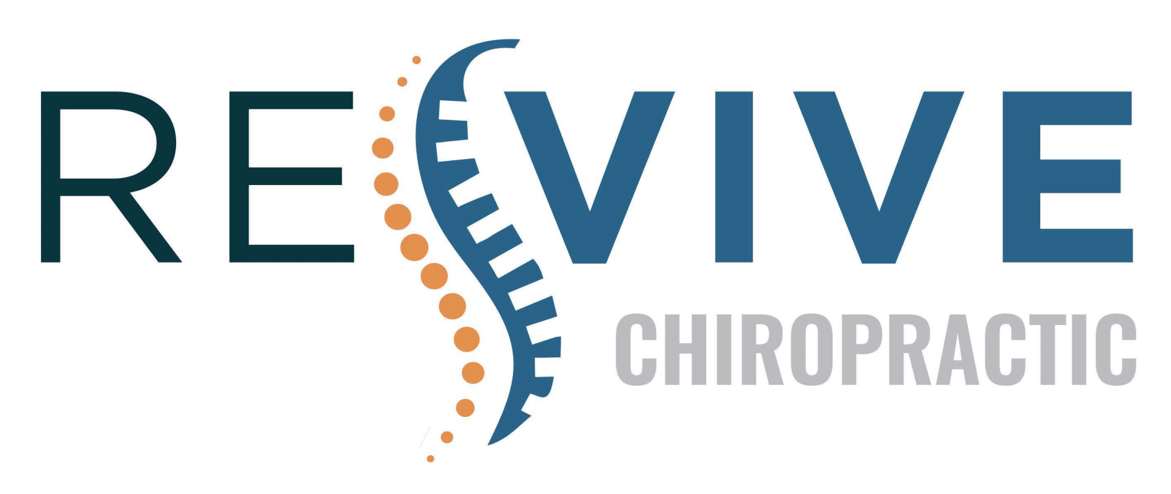When you experience sports-related pain, it's easy to brush it off or think it'll just go away on its own. But ignoring those signals can lead to more serious issues down the line. By seeking help early, you not only address the immediate discomfort but also set the stage for a more sustainable athletic career. Understanding the nuances of your pain can reveal tailored treatment options that enhance your performance. So, what are the common pitfalls athletes should be aware of when it comes to pain management?
Understanding Sports-Related Pain
Sports-related pain is a common experience for many athletes, whether they're professionals or weekend warriors. You might feel a twinge in your knee after a long run, or perhaps your shoulder aches after a tough game. Understanding this pain is vital for your performance and overall well-being. It's your body's way of communicating that something mightn't be right.
Pain often arises from various factors, including overuse, improper techniques, or inadequate warm-up routines. When you push your limits, you might ignore early signs of discomfort, thinking they'll go away. However, ignoring these signals can lead to more severe injuries down the line.
Recognizing the difference between normal soreness and pain that signals a problem is important. Normal soreness usually fades within a day or two, while persistent pain can indicate an underlying issue.
Moreover, each sport puts unique stress on different body parts. If you play basketball, your knees and ankles are under constant strain, while runners often experience issues in their hips and legs. By understanding the specific demands of your chosen sport, you can better anticipate the types of pain you may encounter.
Ultimately, listening to your body and understanding the nature of your pain can help you make informed decisions about when to seek professional help. Addressing sports-related pain early can prevent further complications, allowing you to continue enjoying your favorite activities without interruption.
Common Types of Sports Injuries
Injuries can happen in any sport, and understanding the common types can help you identify and address them quickly. One of the most frequent injuries you might encounter is a sprain, which occurs when you stretch or tear a ligament. This often happens during activities that involve sudden changes in direction, like basketball or soccer.
Another common issue is a strain, which affects your muscles or tendons. Strains typically result from overstretching or overexerting yourself during activities such as running or weightlifting. You may notice pain, swelling, or limited mobility if you strain a muscle.
Fractures are more serious injuries that involve breaks in the bone. They can be caused by falls, collisions, or high-impact activities. If you experience intense pain, swelling, or an inability to use the affected area, you might be dealing with a fracture.
Tendinitis, on the other hand, is an inflammation of the tendons, often resulting from repetitive motions. Sports like tennis and golf can lead to this, causing pain and stiffness in the affected joint.
Lastly, you might face a concussion, especially in contact sports. This brain injury can occur due to a blow to the head and may cause symptoms like confusion, headaches, and dizziness.
Recognizing these common injuries is essential for your safety and performance. Knowing the signs allows you to seek help when needed and get back to doing what you love.
Importance of Early Intervention
When you notice pain from a sports injury, acting quickly can be essential.
Early intervention not only helps prevent long-term damage but also speeds up your recovery process.
Don't wait for the pain to worsen—take action now to get back in the game sooner.
Prevent Long-Term Damage
Ignoring pain from physical activities can lead to serious long-term damage. When you brush off those aches and pains, you risk exacerbating minor injuries into major problems that can sideline you for extended periods.
Early intervention is vital in preventing such damage and guaranteeing you stay in the game. Here are four reasons why addressing pain promptly is essential:
- Prevent Escalation: Treating minor issues early prevents them from developing into chronic conditions that are harder to manage.
- Maintain Performance: By addressing pain right away, you make certain your body functions at its best, allowing you to perform at your best.
- Reduce Recovery Time: Early intervention often leads to shorter recovery periods, meaning you can return to your activities quicker.
- Avoid Surgical Interventions: Catching issues early can help you avoid more invasive treatments like surgery, which can disrupt your life considerably.
Don't wait until things worsen. Seeking help for sports-related pain not only protects your current performance but also secures your long-term health.
Enhance Recovery Speed
Speeding up recovery is essential for athletes who want to stay competitive and healthy. When you experience pain or injury, seeking help right away can dramatically enhance your recovery speed. Early intervention allows professionals to assess your condition accurately and create a tailored treatment plan. This proactive approach minimizes downtime and helps you return to your sport sooner.
Ignoring pain or delaying treatment can lead to more severe injuries, ultimately prolonging your recovery. By addressing issues early, you're not only treating the symptoms but also preventing potential complications that could sideline you for longer.
Whether it's physical therapy, chiropractic care, or medical attention, getting the right support immediately can accelerate healing.
Additionally, early intervention often involves education on proper techniques and injury prevention strategies. This knowledge empowers you to make informed decisions about your training and recovery, enhancing your overall performance.
Recognizing Warning Signs
Many athletes underestimate the significance of early warning signs their bodies display in response to sports-related pain. Ignoring these signals might lead to more severe injuries or prolonged recovery times.
It's essential to recognize these signs early so you can take action before things escalate.
Here are four common warning signs you shouldn't ignore:
- Persistent Pain: If you feel pain that lingers beyond your usual post-exercise soreness, it's a sign that something may be wrong. Listen to your body; persistent pain can indicate an injury needing attention.
- Swelling or Inflammation: Noticeable swelling in any area of your body after activity can signal injury. Inflammation is your body's way of indicating that it's trying to heal itself, but you may need professional advice to manage it properly.
- Limited Range of Motion: If you find it hard to move a joint or muscle the way you typically would, it's a red flag. Limited mobility often suggests underlying issues that could worsen without intervention.
- Recurrent Injuries: If you keep experiencing the same injury over and over again, your body's trying to tell you something. This pattern indicates that your training might need adjustment, or there may be an unresolved issue that needs professional evaluation.
Recognizing these warning signs is key to maintaining your athletic performance and overall health.
Don't wait for the pain to become unbearable—pay attention, and seek help when needed.
Benefits of Professional Assessment
Getting a professional assessment for sports-related pain can help you catch injuries early, preventing further complications.
You'll also receive a personalized treatment plan tailored to your specific needs, ensuring a faster recovery.
Don't underestimate the importance of expert guidance in your journey to better performance and health.
Early Injury Detection
Recognizing the early signs of injury can make a significant difference in your recovery and overall performance. When you seek professional assessment, you benefit from expert insights that can help you identify potential issues before they escalate.
Here are four key benefits of early injury detection:
- Prevention of Further Damage: Catching an injury early can prevent it from worsening, allowing you to avoid more serious complications down the line.
- Improved Recovery Time: With timely intervention, your recovery process can be faster and more effective, getting you back to your sport sooner.
- Enhanced Performance: Addressing issues early helps maintain your performance levels, ensuring you're always at your best when it counts.
- Informed Decision-Making: Professional assessments provide you with a clear understanding of your body's condition, enabling you to make informed choices about your training and participation in sports.
Personalized Treatment Plans
After identifying potential injuries early on, the next step involves creating personalized treatment plans tailored to your specific needs. These plans are essential because no two injuries—or athletes—are the same. A professional assessment takes into account your unique body mechanics, sport-specific demands, and personal goals, ensuring you receive the most effective care.
With a personalized treatment plan, you're more likely to experience faster recovery times. The right combination of therapies, exercises, and rest can help you regain strength and mobility more efficiently. Additionally, these plans often incorporate preventive measures, addressing underlying issues and reducing the risk of future injuries.
You'll also benefit from ongoing support and adjustments as you progress. If something isn't working, your treatment can be modified, maximizing your chances of returning to your sport stronger than before. Working with a professional means you'll receive expert guidance, helping you navigate the complexities of your recovery journey.
Ultimately, personalized treatment plans empower you to take control of your health and performance, ensuring you're not just back in the game, but thriving in it. Don't underestimate the value of a tailored approach to sports-related pain.
Treatment Options Available
When facing sports-related pain, it's important to explore the various treatment options available to you. Addressing your discomfort early can help prevent it from worsening and keep you in the game. Here are some effective treatments to keep in mind:
- Physical Therapy: A skilled physical therapist can design a personalized rehabilitation program that focuses on strengthening and stabilizing the affected area. This approach aims to restore mobility and alleviate pain through targeted exercises.
- Medication: Over-the-counter pain relievers like ibuprofen or acetaminophen can help manage inflammation and discomfort. If your pain persists, a healthcare provider may prescribe stronger medications to provide relief.
- Injections: Corticosteroid injections may offer temporary relief from pain and inflammation for specific conditions. This method can be beneficial if you're dealing with persistent pain that doesn't respond to other treatments.
- Surgery: In cases where conservative treatments fail, surgical options may be necessary. This route can vary widely depending on the injury but often aims to repair or remove damaged tissues to restore function.
Each treatment option has its benefits and potential drawbacks. Consulting with a healthcare professional is vital to determine which approach is best suited for your specific situation.
Preventative Measures to Consider
To stay in the game and reduce the risk of sports-related injuries, it's important to adopt preventative measures. First, make sure you're warming up properly before every practice or game. Spend at least 10 to 15 minutes stretching major muscle groups and engaging in dynamic movements that mimic your sport. This prepares your body and enhances flexibility.
Next, focus on strength training. Building strong muscles around your joints provides better support and stability. Incorporate exercises that target key areas relevant to your sport, like your core, legs, and shoulders.
Additionally, pay attention to your technique; improper form can lead to injuries. Work with a coach or trainer to refine your skills.
You should also invest in the right gear. Wearing appropriate footwear is critical, as it provides support and traction specific to your sport. Don't overlook protective equipment, like shin guards or helmets, which can prevent serious injuries.
Hydration plays an essential role too. Dehydration can increase your risk of cramps and fatigue, so drink plenty of water before, during, and after your activities.
Finally, listen to your body. If you're feeling pain or fatigue, don't push through it. Allow yourself time to rest and recover.
Long-Term Health Implications
Regularly engaging in sports can lead to long-lasting health implications, both positive and negative. While staying active is essential for overall well-being, it's vital to be aware of potential risks that can arise from injuries or overexertion.
Ignoring pain may seem harmless in the short term, but it can have significant consequences down the road. You mightn't realize how your body responds to repeated stress or trauma until it's too late.
Here are four long-term health implications you should consider:
- Chronic Pain: Untreated injuries can result in ongoing pain, affecting your daily life and limiting your ability to participate in the sports you love.
- Joint Degeneration: Overuse injuries can lead to conditions like osteoarthritis, where the cartilage in your joints wears down, causing pain and stiffness.
- Muscle Imbalances: Repeated movements may create imbalances in muscle strength, leading to further injuries or postural issues that can affect your overall health.
- Mental Health Effects: Persistent pain or injuries can lead to anxiety and depression, impacting your motivation and enjoyment of sports and life in general.
Enhancing Performance Through Care
Taking care of your body is fundamental for enhancing athletic performance, as proper attention to your physical condition can lead to improved results on the field or court. When you prioritize your health, you're not only reducing the risk of injury but also optimizing your strength, endurance, and overall efficiency.
Regular check-ups, physical therapy, and appropriate treatment for any pain or discomfort can greatly boost your capabilities.
Listening to your body is imperative. If something feels off, don't ignore it. Addressing pain early can prevent it from becoming a more considerable issue that sidelines you for weeks or months. Seeking professional help isn't a sign of weakness; it's a smart strategy that shows you're committed to your sport and goals.
Incorporating proper recovery techniques can also enhance your performance. Adequate rest, nutrition, and hydration are essential components that play a role in how well you perform.
Consult a sports nutritionist or a trainer to develop a regimen that suits your specific needs.
Moreover, engaging in preventive care can keep you at your peak. Regularly working with a coach or athletic trainer guarantees you're using the right techniques and avoiding bad habits that could lead to injuries.
Ultimately, focusing on your physical well-being isn't just about avoiding pain; it's about revealing your full potential. By investing in your health, you'll notice improvements in your performance, giving you the edge you need to excel in your sport.
Conclusion
In conclusion, seeking help for sports-related pain is essential for your performance and overall well-being. Early intervention can prevent minor injuries from becoming serious issues, allowing you to recover faster and stay in the game. By recognizing warning signs and consulting professionals, you can receive tailored treatment plans that address your specific needs. Prioritizing your health not only enhances your physical capabilities but also supports your mental resilience, ensuring a longer, more successful sports career.



